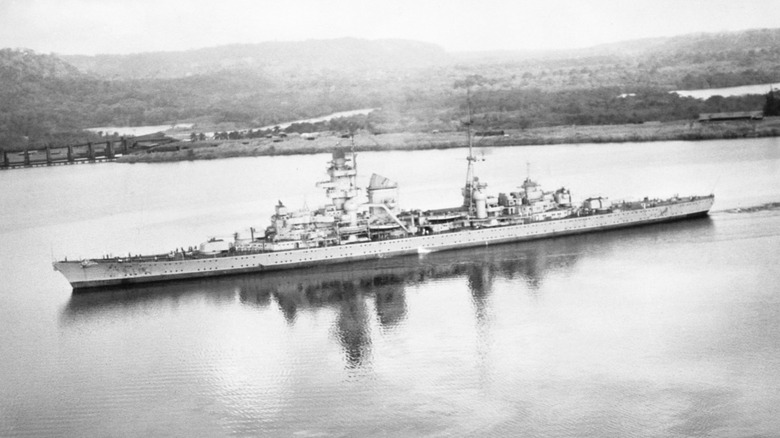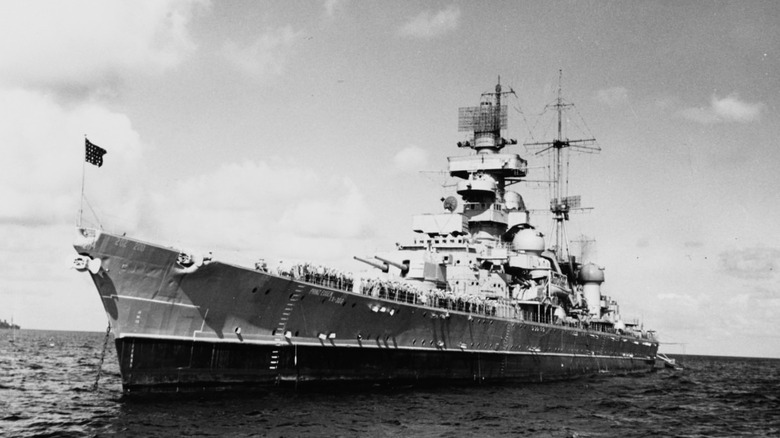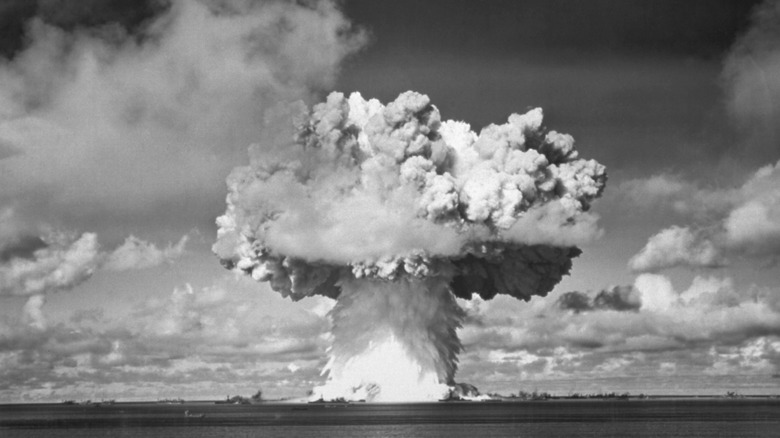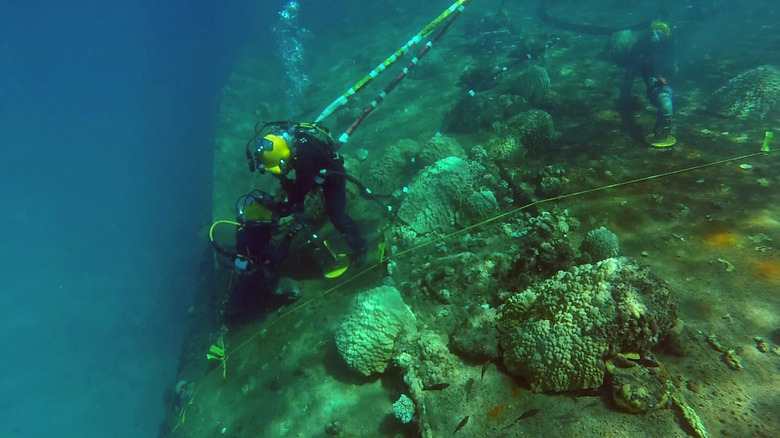The Bizarre Story Of WW2's Prinz Eugen Battleship
To say the end of World War II was hectic would be an understatement. Europe and a large portion of the Pacific Islands were left in shambles as Allied forces scrambled to pick up the pieces and salvage what was left to rebuild both areas of the world. On May 7th, 1945, Nazi Germany surrendered to Allied Forces in France and surrendered to Soviet forces on May 8th in Berlin. As a result of the surrender, the former Third Reich handed over tanks, guns, ships, research personnel and all manner of equipment to the Allies.
One such piece of surrendered equipment was the Prinz Eugen, a 697-foot Admiral Hipper Class German Heavy Cruiser named after Prince Eugene of Savoy, a 17th and 18th century Austrian general. When it was under command of the Nazi Kriegsmarine, the Prinz Eugen was fairly well known to the Allies. It had participated in the Battle of the North Atlantic, the naval engagement that saw the tragic loss of the British Royal Navy's HMS Hood and eventually the sinking of the German Battleship Bismarck. Additionally, the vessel fired its guns at Soviet targets in support of Waffen-SS and Wehrmacht operations At the end of the war, the Prinz Eugen had the distinction of being one of the few German warships that didn't become an artificial reef.
Initially, the warship was foisted upon the Royal Navy right as the war ended. But it never saw combat on the Atlantic. It was destined for something much stranger.
Shuffled around different fleets
The former Kriegsmarine vessel was put into a warship lottery of sorts. There it languished until December of 1945 when the U.S. Navy won the ship. Shortly afterwards, it was given the illustrious title of "unclassified miscellaneous vessel USS Prinz Eugen IX-300." With a fancy warship now in the possession of the U.S. Navy, you'd think it would be used to reverse engineer and build upon existing designs. But you'd be only partly correct. The sonar and fire control systems were removed for testing along with the seaplanes it carried.
But much like a Craigslist Mercedes years past its prime, the Prinz Eugen was nearly impossible to keep operational, even with a crew consisting of former members of the German Kriegsmarine who had served on the ship. The boilers that provided steam to propel the ship reportedly failed regularly and it was more pain than it was worth to keep above water. It was then that higher ups in command decided that the Prinz Eugen would end its career with a bang. It would be used for atomic testing.
Nuked in the Pacific
Operation Crossroads was a test of nuclear weapons on a naval fleet at sea near the Bikini Atoll in the Marshall Islands of the Pacific. The fleet was comprised of 90 vessels from the American Navy and captured Imperial Japanese and Kriegsmarine warships, the Prinz Eugen was inducted into the target fleet after being towed from Philadelphia. The first test was conducted on July 1st, 1946 when a 23-kiloton nuclear bomb named ABLE was detonated. Perhaps miraculously, the Prinz Eugen remained afloat.
A second weapon named BAKER, also a 23-kiloton warhead, was detonated on July 25th, 1946. Yet, despite experiencing the not one, but two nuclear blasts with yields many times greater than the atomic bombs dropped on Japan to end the WAR, the Prinz Eugen survived, although this time damaged.
Eventually the warship succumbed to its wounds and unceremoniously capsized on December 22nd, 1946. The official cause of the Prinz Eugen's demise was getting nuked twice. But even nuclear hellfire isn't the end of the Prinz Eugen's story.
The Prinz Eugen today
After capsizing near a coral reef near Enubuj Island, part of the Kwajalein Atoll of the Marshall Islands, the vessel was officially offloaded to the Marshall Islands. But the saga still isn't over. As one might expect, the citizens of the island chain weren't keen on having to deal with a nearly eight decade old battleship full of environmentally hazardous substances just sitting off their coast.
In 2010, the Republic of the Marshall Islands asked the U.S. Navy for help and it was happy to oblige. By 2018, a plan was enacted to siphon out remaining fuel from the 173 tanks onboard the Prinz Eugen. U.S. Navy Lt. Commander Tim Emge was tapped to lead the process of removing the trapped oil through a procedure known as hot tapping, essentially drilling multiple holes all over the capsized vessel.
Lt. Commander Emge said of the operation: "Hot tapping allows us to safely tie into the many tanks without leakage by creating a secure opening to place the valve, hot tap tool. and pipe for pumping from the highest point on the tank. We were able to successfully, and most importantly safely, conduct over a hundred hot taps throughout the operation." Overall, around 250,000 gallons of fuel was removed from the wreck.
Today, nearly 77 years after the Prinz Eugen rolled over in the shallow waters of the Pacific, it's still there. It is a popular site for recreational divers.



